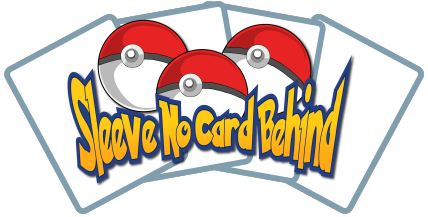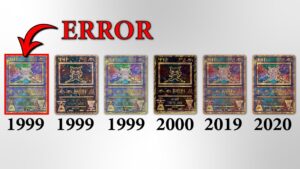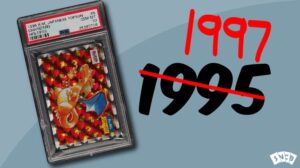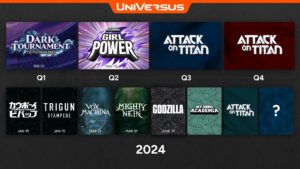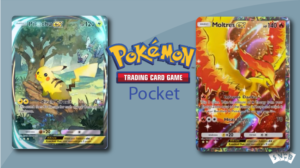Where to Check Pokémon Card Prices
-
Oliver Copeland
- Last Updated: December 2, 2023
Unless someone is ultra-wealthy, they usually check the price of something before they buy it. When you go to sell something you own, you first research the value and then set the asking price. So why would Pokémon cards be any different? The problem is, that there are thousands of unique cards, so how do you check card prices? Luckily there is an easy and proven method that can result in lucrative profits if done right. Keep reading if you want to know how to check Pokémon card prices.
To see how much a Pokémon card is worth, check sold listings on eBay or current market prices on other sites such as tcgplayer.com.
5 Sites to check Pokémon card prices
#1- eBay
eBay.com is the world’s largest market for single Pokémon cards. Hundreds and sometimes thousands are bought and sold every day. When a market is this healthy and active, finding card values is easy and reliable.
Look up the card that you’re searching for, and see what the latest listings have sold at. Perhaps you notice that the card is on an upward trend. eBays healthy market provides the best and most accurate card values, but you are forced to dig into the listing yourself and it may require some effort.
Pros
- High sales volume can help with accurate price-checking
- All listings require photos
- Cards are pretty easy to find
- Bidding on cards sometimes results in great deals
- Easy to find and purchase foreign language cards
Cons
- No price data or charts to reference card prices
- eBay is not a trading card website
#2- TCG Player
Tcgplayer.com is also a healthy card market but is specific to trading cards, so it is built with the customer (me and you) in mind.
One of the advantages of using tcgplayer is that it provides metrics for each individual card such as current market value, bottom value, and sometimes a small graph indicating the recent price fluctuations.
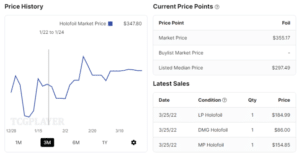
However, tcgplayer isn’t as accurate as eBay since we don’t have access to each individual sale. Also, it is still not possible to switch the website out of US currency. So all prices will be in USD.
Pros
- Useful graphs representing recent price fluctuations
- Current market values
- Reasonable prices
Cons
- Photos not required for listings
- Currency is locked to USD
- Market prices are not always accurate
- Doesn’t have Japanese cards
#3- Troll and Toad
Trollandtoad.com is very similar to tcgplayer and fulfills the same needs for a collector. However, trollandtoad doesn’t offer the unique metrics that tcgplayer does, nor the transparency of the sales that eBay does.
Trollandtoad does often have the best deals though as well as a very powerful reputation within the industry. Tcgplayer actually uses trollandtoad as one of their price references, as do many websites and price trackers.
Pros
- Huge selection of cards
- Lots of Japanese cards
- Easy checkout with Amazon
- Reasonable prices
Cons
- Photos not required for listings
- Currency is locked to USD
#4- Pokédata
Pokédata.io is a relatively new website that tracks the sales of cards on eBay. Pokédata is a powerful tool because it’s designed specifically for tracking prices and has a number of filters to narrow down the specific card you want to observe.
Another bonus to Pokédata is that it can track graded or raw card sales. This can be useful when researching potential profits from grading your cards.
Pros
- Data is pulled directly from eBay
- Data is transparent with sources
- Ability to filter PSA grades
- Nice data representation by graph
Cons
- The young site is still undergoing development
- Account creation required (free)
#5- Pokémon Prices
Pokemonprices.com is one of the best tools available for checking Pokémon card prices.
Data from multiple merchants is collected and displayed in easy-to-read charts. You can select specific cards or look at sets and view multiple metrics and averages for pricing.
The home page offers a nifty little chart for the cards that have dropped significantly in price as well as gains, within a recent period. However, these price shifts can sometimes be misleading as one big sale can skew the data.
As for accuracy, pokemonprices doesn’t have the best reputation but is more than appropriate if you’re looking to value your cards. This is due to the data sometimes being misleading or skewed and misinterpreted by users. This is the price you sometimes pay when so much raw data is available.
Pros
- Massive catalog
- Falling/rising cards charts
- Data pulled directly from eBay
Cons
- Pop-up ads
- The site doesn’t feel maintained (broken links)
- The way data is sometimes represented can be misleading
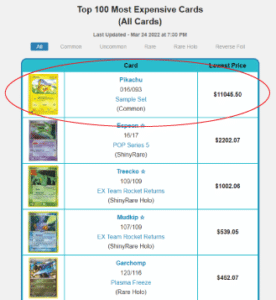
How to value your cards
There are many reasons to check the value of cards you are interested in, but sometimes you’ll find yourself checking prices on your own cards.
Check out our other article with a step-by-step guide to find the value of your old cards! Click here.
You might be planning to sell some cards or perhaps make a potential trade. Either way, you need to know how to determine prices correctly.
The fastest and easiest way to find the value of a card is through eBay sold listings. These are listings that have been sold already and are no longer available. Why this is important is because the buyer has paid for the card already. Anyone can set any price they want on eBay, so the ‘Buy It Now’ price is not always a good indicator.
By checking sold listings, you know that a transaction has been made and therefore the price has some actual merit.
However, you’ll first need to identify the card properly and also determine the condition of the card. Condition is the greatest factor in a card’s value, so be mindful when looking over the card. We like to refer to tcgplayer’s card condition guide, here.
Once you’ve got your information, search for the card on eBay in this format:
[Name of card] [Number of card] [Card condition]
For example, “Charizard 4/102 NM” see the results.
How to sell your Pokémon cards
Selling your cards can be a simple and painless process. If you want to sell some cards or perhaps just one card, you have to first decide whether you’re going to sell online or locally.
Selling locally has some advantages. You have the opportunity to support your local economy if you sell to a hobby shop or card shop. If you sell through Facebook marketplace or something similar, you have the chance at meeting new people who are also fans of the hobby. If you’re in a pinch and need the money, pawn shops usually loan on valuable cards without question.
Selling online is a great option because you’ll probably get close to the market price for your card. Sites like eBay are so popular that you’ll likely sell your card fast, and have your listing seen by a high volume of potential buyers. The downsides are that sites like eBay will charge a middleman fee and you’ll have to ship the card out. If for some reason the card doesn’t arrive at the buyer’s location or arrives damaged, eBay will look at you to resolve the issue.
The best place to buy cards
Buying cards is the fun part. This is a collector’s hobby, so there will always be cards that you have never seen before, or cards that you feel like you need to own.
The best place to buy cards will depend on what you are looking for as a collector. If you like to buy sealed products and open them, sites like stockx.com or bestbuy.com will suffice. Modern cards aren’t usually difficult to find.
However, if you’re interested in buying single cards that you’ve been dying to add to your collection, eBay is probably the best option. One of the main benefits of buying singles off eBay is that listings require photos. You can look over the card beforehand and see the condition for yourself, then move into the decision to buy or not.
A site like tcgplayer.com has singles you can buy also, but one of the flaws to this site is that photos are not required. This does, however, often result in slightly lower prices. On tcgplayer.com, sellers are required to describe the card’s condition, so you’ll know if you’re purchasing a light player or near-mint card. This can be a double-edged sword because the description of the card sometimes won’t match your expectations.
Card condition is highly subjective (unfortunately) so sometimes you’ll receive what you consider to be moderate played when you order a lightly played card. This can go the other way when you receive a card in better condition than you expected, but it usually doesn’t happen this way.
Final thoughts
Checking Pokémon card prices can be fun. The card market reflects the stock market in some ways and plays heavily on basic supply and demand principles. If you don’t watch the clock, you’ll get lost looking up all your old cards from when you were a kid, shocked at some of the spikes in value. However, you go about it, checking card prices is essential if you plan to buy or sell any products.
